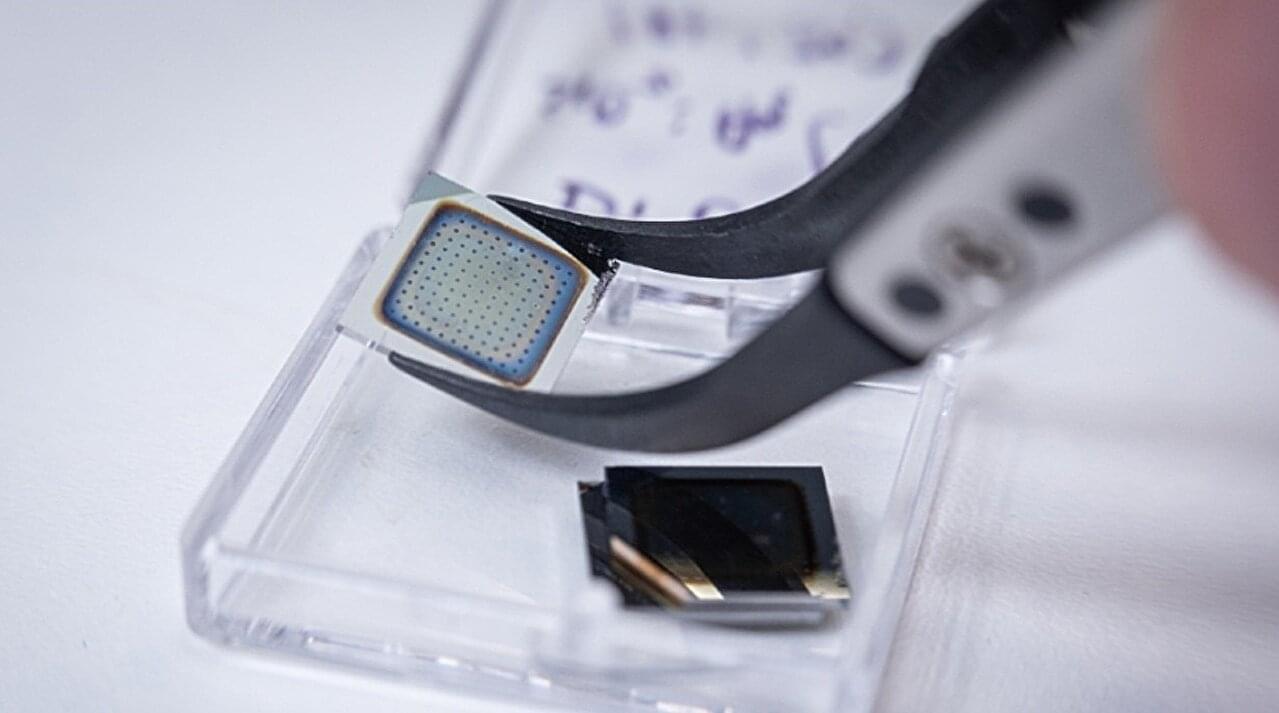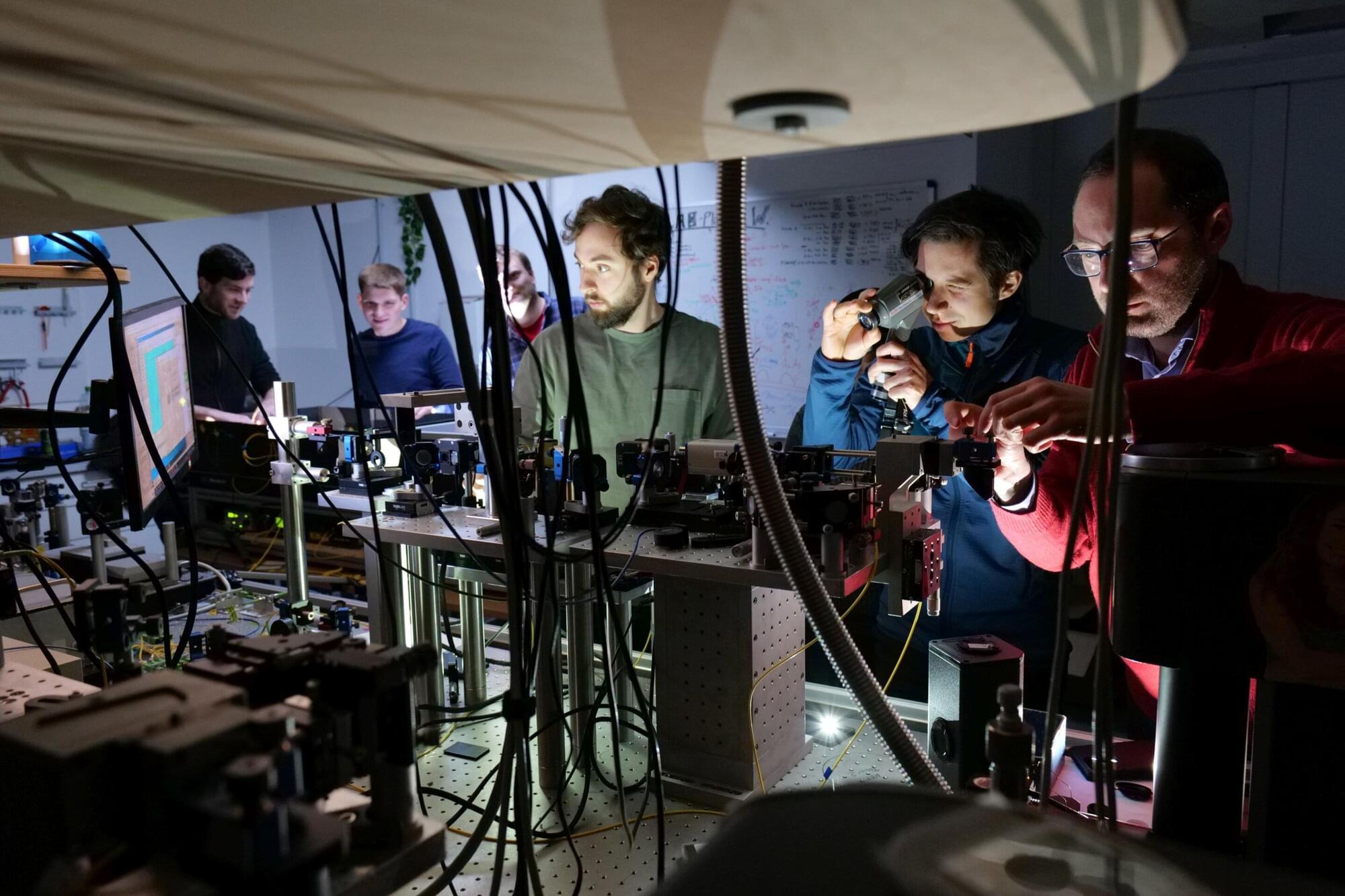Developed at Caltech, a new robot is a humanoid that can launch an M4 drone, switching between different modes of motion, with wheels that can become rotors.
Category: robotics/AI – Page 47
Grigory Tikhomirov | DNA-Based Molecular Manufacturing for Biotech and Electronics
*This video was recorded at ‘Paths to Progress’ at LabWeek hosted by Protocol Labs & Foresight Institute.*
Protocol Labs and Foresight Institute are excited to invite you to apply to a 5-day mini workshop series to celebrate LabWeek, PL’s decentralized conference to further public goods. The theme of the series, Paths to Progress, is aimed at (re)-igniting long overdue progress in longevity bio, molecular nanotechnology, neurotechnology, crypto & AI, and space through emerging decentralized, open, and technology-enabled funding mechanisms.
*This mini-workshop is focused on Paths to Progress in Molecular Nanotechnology*
Molecular manufacturing, in its most ambitious incarnation, would use programmable tools to bring together molecules to make precisely bonded components in order to build larger structures from the ground up. This would enable general-purpose manufacturing of new materials and machines, at a fraction of current waste and price. We are currently nowhere near this ambitious goal. However, recent progress in sub-fields such as DNA nanotechnology, protein-engineering, STM, and AFM provide possible building blocks for the construction of a v1 of molecular manufacturing; the molecular 3D printer. Let’s explore the state of the art and what type of innovation mechanisms could bridge the valley of death: how might we update the original Nanotech roadmap; is a tech tree enough? how might we fund the highly interdisciplinary progress needed to succeed: FRO vs. DAO?
*About The Foresight Institute*
The Foresight Institute is a research organization and non-profit that supports the beneficial development of high-impact technologies. Since our founding in 1986 on a vision of guiding powerful technologies, we have continued to evolve into a many-armed organization that focuses on several fields of science and technology that are too ambitious for legacy institutions to support. From molecular nanotechnology, to brain-computer interfaces, space exploration, cryptocommerce, and AI, Foresight gathers leading minds to advance research and accelerate progress toward flourishing futures.
*We are entirely funded by your donations. If you enjoy what we do please consider donating through our donation page:* https://foresight.org/donate/


Deep Learning-Enhanced Noninvasive Detection of Pulmonary Hypertension and Subtypes via Chest Radiographs, Validated by Catheterization
The central clock drives metabolic rhythms in muscle stem cells.
Sica et al. show that the circadian clock in the brain controls daily rhythms in muscle stem cells. These rhythms affect stem cell metabolism and repair capacity, even in the absence of a local clock. The findings reveal how central signals shape tissue-specific stem cell functions through systemic cues like feeding.

First full simulation of 50 qubit universal quantum computer achieved
A research team at the Jülich Supercomputing Center, together with experts from NVIDIA, has set a new record in quantum simulation: for the first time, a universal quantum computer with 50 qubits has been fully simulated—a feat achieved on Europe’s first exascale supercomputer, JUPITER, inaugurated at Forschungszentrum Jülich in September.
The result surpasses the previous world record of 48 qubits, established by Jülich researchers in 2022 on Japan’s K computer. It showcases the immense computational power of JUPITER and opens new horizons for developing and testing quantum algorithms. The research is published on the arXiv preprint server.
Quantum computer simulations are vital for developing future quantum systems. They allow researchers to verify experimental results and test new algorithms long before powerful quantum machines become reality. Among these are the Variational Quantum Eigensolver (VQE), which can model molecules and materials, and the Quantum Approximate Optimization Algorithm (QAOA), used for optimization problems in logistics, finance, and artificial intelligence.
Michael Levin: Unconventional Embodiments: model systems… (ECSU OIST)
Youtube caption.
On 11th of December 2025, Michael Levin gave a talk as part of the ECogS Conference hosted by The Embodied Cognitive Science Unit at OIST.
Title: Unconventional Embodiments: model systems and strategies for addressing mind-blindness.
Abstract: One of the most salient aspects of any agent’s environment is the question of how many, what kind, and what degree of agency exists in it. It is as relevant to biological organisms as to robots in human environments. It is also critical for scientists, philosophers, and engineers, as well as for human societies which will increasingly contain modified, synthetic, and hybrid beings of every possible description. In this talk I will argue that our evolutionary history has left us with significant mind-blindness, which makes it difficult for us to recognize minds of unfamiliar scales, problem spaces, or embodiments. I will describe our lab’s work to develop conceptual tools for recognizing and communicating with diverse intelligences. I will also present recent data from our new synthetic proto-organisms, in which we test those ideas by creating and studying the behavioral properties of beings who have not been specifically selected for them. I will conclude the talk with a speculative idea about the latent space from which novel intrinsic motivations ingress into physical, biological, and computational systems.
How ancient philosophers would shape AI | Brendan McCord
We made this video in partnership with the Cosmos Institute, a network of thinkers and builders advancing human flourishing in the AI era.
Read the Cosmos Institute Substack ► https://bit.ly/3XK5T7k.
Follow Brendan McCord on X ► https://bit.ly/3Y9pFLb.
Artificial intelligence is transforming our world, prompting us to revisit fundamental philosophical questions about human existence and purpose. In this interview, Brendan McCord, founder of the Cosmos Institute, examines how philosophical insights from thinkers like Aristotle, John Stuart Mill, and Alexis de Tocqueville can inform our approach to AI, ensuring it enhances rather than undermines human flourishing.
McCord outlines three crucial steps to align AI with the principles of autonomy, reason, and decentralization. By drawing on ancient wisdom, we can navigate the complexities of modern technology and create a future where innovation and human values coexist.
Reflecting on the transformative ideas from Copernicus to Turing, this interview offers a roadmap for finding our place in the cosmos amidst the AI revolution. Explore how we can build a society that prioritizes human potential in the age of technology.

Artificial neuron can mimic different parts of the brain—a major step toward human-like robotics
Robots that can sense and respond to the world like humans may soon be a reality as scientists have created an artificial neuron capable of mimicking different parts of the brain.
Artificial neurons—tiny electronic circuits that replicate the way brain cells communicate—lie at the heart of neuromorphic computing, a field aiming to bring human-like intelligence to machines.
Despite rapid progress, today’s artificial neurons can only perform fixed tasks, each serving a narrow role. Thousands must be combined to replicate simple brain functions—a costly, energy-hungry process compared with the brain’s effortless adaptability.
Disney teaches a robot how to fall gracefully and make a soft landing
Bipedal (two-legged) robots are sophisticated machines, but they are not the most graceful when things go wrong. A simple push, fall or an obstacle can send them crashing to the ground, often resulting in expensive damage to sensitive components such as cameras.
To solve this problem, researchers at Disney Research in Zurich, Switzerland, have developed a new system that ensures that when gravity brings a robot tumbling down, it falls softly and gracefully.
Existing techniques to protect robots when they topple over do not offer control or effectively minimize impact. Actuators might freeze, causing the robot to stiffen and hit the ground hard, or they might go limp, leaving the robot to tumble chaotically. Other methods rely on pre-programmed falling motions, but these only work for slow movements or simple falls.

Quantum teleportation between photons from two distant light sources achieved
Everyday life on the internet is insecure. Hackers can break into bank accounts or steal digital identities. Driven by AI, attacks are becoming increasingly sophisticated. Quantum cryptography promises more effective protection. It makes communication secure against eavesdropping by relying on the laws of quantum physics. However, the path toward a quantum internet is still fraught with technical hurdles.
Researchers at the Institute of Semiconductor Optics and Functional Interfaces (IHFG) at the University of Stuttgart have now made a decisive breakthrough in one of the most technically challenging components, the quantum repeater. They report their results in Nature Communications.